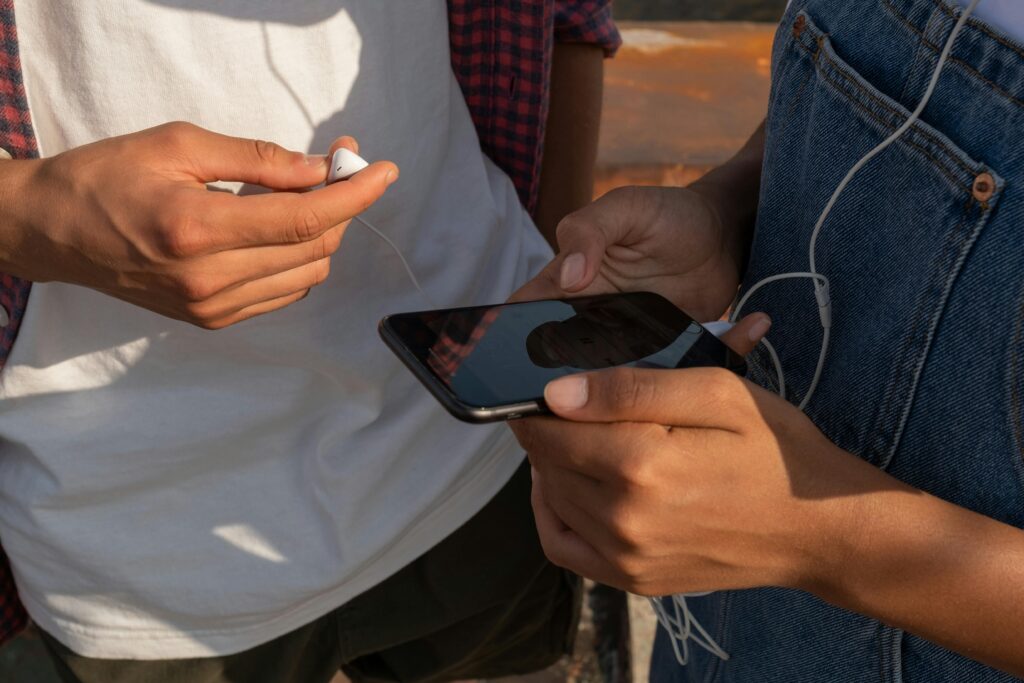Social media and the online world is a constant reminder to teenagers about what they should be wearing, doing, thinking, believing, looking like and saying. The peer group is always there – at the click of a button. Social media seems like a winning formula for teenagers because it offers a way to connect with others. Teenagers will do almost anything to be accepted by other teenagers and they tend to conform to the opinions of their peer group.
Social media is today’s meeting place for teenagers. Their behaviour on social media is intricately linked to their desperate need to be accepted and included as part of the group. If social media is today’s teenage language, then if they don’t speak it they will be alienated from the peer group. But they need their therapists, parents and their teachers to give them constructive guidance about how to handle this new language that can be so destructive at times.
Never alone
For teenagers in any generation in any culture, what really matters is the peer group, their position in that peer group, their popularity and their friendships. Being alone and isolated as a teenager is not developmentally appropriate and it often does not have a positive impact on mental health. Those teenagers who are awkward in their face-to-face social interactions have the opportunity to make up for it online. They make connections on the internet with anyone who is available to them. They step out of their school circles and they meet other teenagers in different cities and countries.
Adolescents need each other. They have to make the important shift from their family towards others and their peer group is usually the place to start. An adolescent who is not online with friends might not be doing what today’s teenagers are doing. A few decades ago, teenagers used to take the landline telephone attached to a long cord into their bedrooms. They would close the door and spend hours talking on the phone to friends and lovers. Yesterday’s parents complained about that and today’s parents complain about social media. But, despite the obvious problems with social media, to cut a teenager off from it might mean cutting her off from the life-blood of her interpersonal relationships.
There is risk and rebellion involved in the virtual world, as there is outside of it. In addition to the ever-present threat of online predators, there are also more subtle and pervasive forms of dangers too. Teenagers want to be accepted and they are highly aware of themselves. They don’t want to stand out from the crowd or look different. That’s the main reason that they dress the same as everyone else, as the clothing fashion industry knows. Alan Jacobs, in his book entitled, How to Think, argues that in today’s world people usually think in ways that promote a feeling of belonging to a particular group of people who also think that way. Personal beliefs are aligned to the groups of people with which one identifies oneself.
The internet and social media make it even more difficult to think independently. Adolescents identify themselves with their highly valued peer groups on social media platforms. There is a pressure on these platforms to behave in particular ways, say particular things and be loyal to the ideology of the group. There is very little freedom to think independently. So adolescents often say and do things online that don’t reflect who they really are. Their actions and words might not even be morally in line with who they are in private. But they do these things because others are doing them and because it’s the culture of the peer group. This might involve sending naked photographs of themselves, sharing inappropriate material or insulting other teenagers. It might also involve other reckless actions and behaviours that most of us as adults do not consider to be safe for teens.
In his book Behave: The Biology of Humans at Our Best and Worst, Robert Sapolsky explains the way in which your brain tells you that you are wrong when you make a choice that is different to everyone else. That feeling is so uncomfortable that you are likely to change your mind and take on the views of the people around you. As Sapolsky writes, your choice is between conforming or being deeply lonely. Human beings – teenagers in particular – struggle to be alone. Instead, they try their hardest to fit in and belong to the peer group – doing what the group does and saying what the group says. In order to avoid being alienated from the peer group, teenagers are very quick to relinquish their fragile ideas, values and sense of selves in favour of the group to which they want to belong.
When social media makes teens feel more alone
Sometimes the hope and promise of connection through the internet just simply fails. Whether or not the rejection is real, it can feel agonising for a teenager to see photos of their friends at a party to which there weren’t invited. Seeing online evidence of other peoples’ glory – their achievements, holidays, romances and friendships – can bring about crushing feelings of envy and despair. The lines between being connected and disconnected, accepted and rejected, together and alone, can be severed instantly by looking at an image of someone else having a good time. In a teenager’s mind, the feeling of isolation can be unbearable and dangerously strong. It can also be completely invisible to everyone in the outside world, both virtual and real.
References
- Robert M. Sapolsky, Behave: The Biology of Humans at Our Best and Worst (London: Penguin Random House, 2017).
- Alan Jacobs, How to Think: A Guide for the Perplexed (London: Penguin Random House, 2017).

